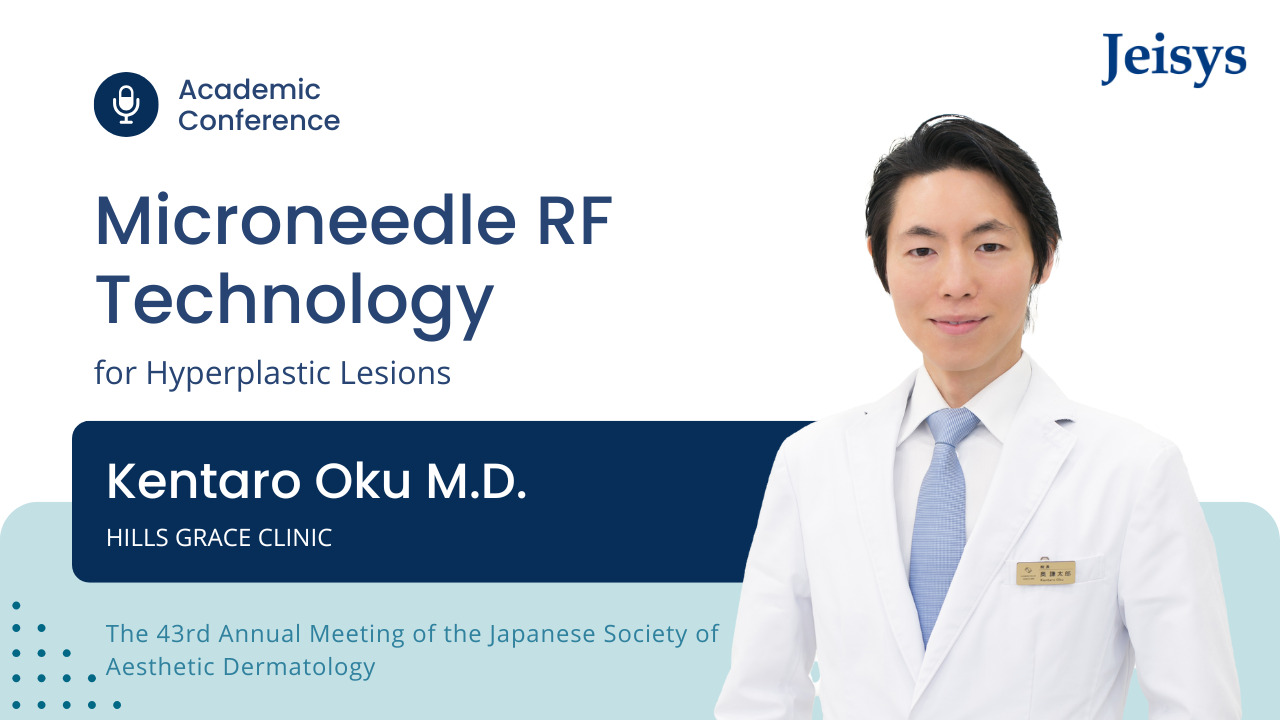
RF Needling enables selective heat delivery to the dermal layer, allowing precise intervention on hyperplastic lesions while minimizing downtime. Single-needle RF technology permits fine-tuning of the heat application site, dose, and temperature history according to the lesion’s morphology and pathological findings. This presentation will outline key points for parameter design using POTENZA, representative indications, and safety margins for use.
- INDEX
Three Conditions for Treatment Design Based on Pathology (1:03-)
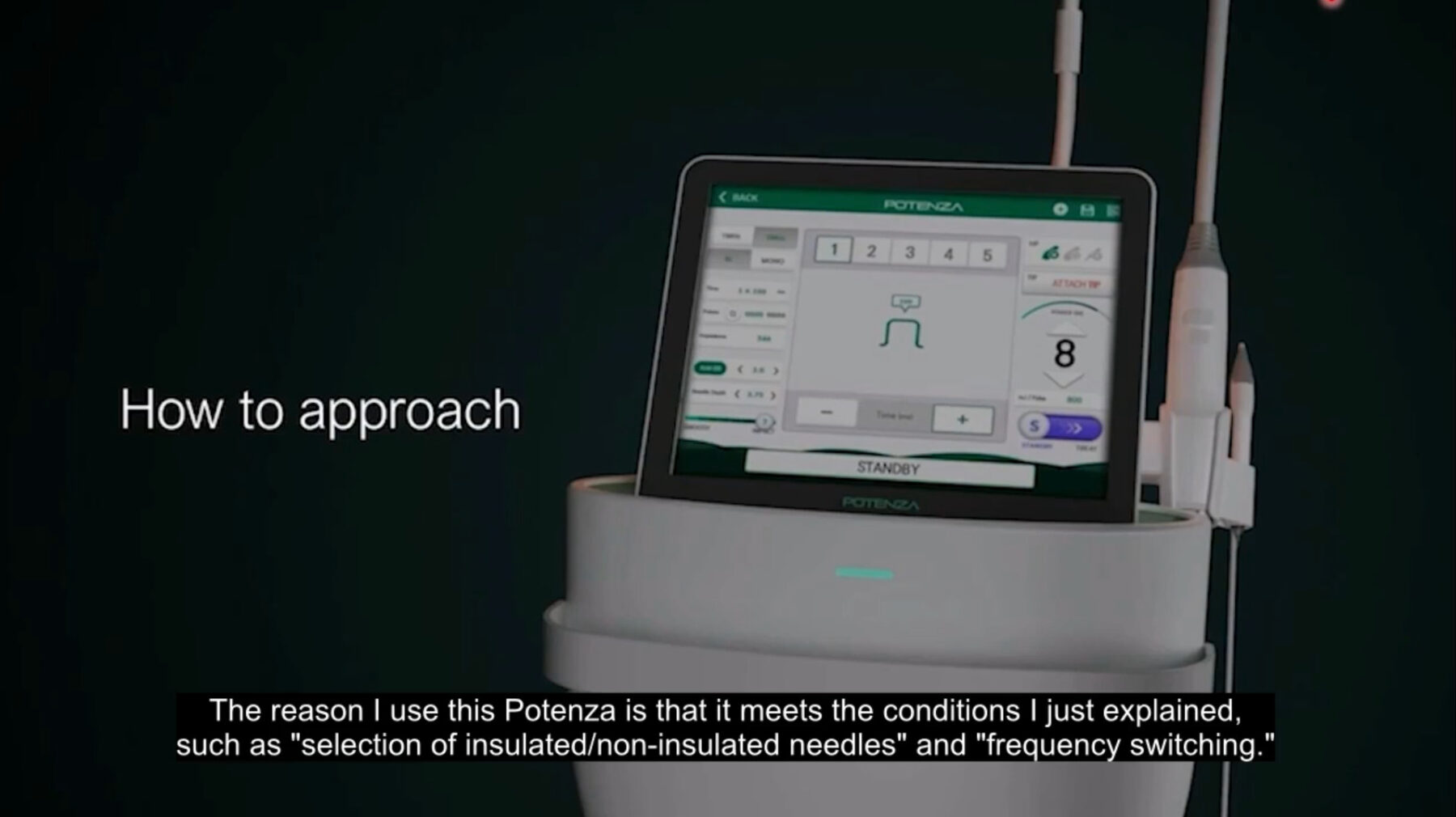
For hyperplastic lesions, 3 key treatment factors are: ① Reach the entire tissue of origin (vessels, sebaceous glands, fibrous tissue, etc.), ② Cover both depth and thickness, and ③ Access the face, trunk, and extremities. While CO₂ lasers and liquid nitrogen are options, RF microneedling offers significant advantages by controlling heat distribution and temperature-time integration, minimizing downtime and protecting normal tissue. POTENZA allows individual adjustment of “insulated/non-insulated needles,” “frequency (1/2 MHz),” “pulse count (1-5),” “duration,” and “insertion depth (6/8/12/15),” enabling a thermal design tailored to the pathological findings.
Parameter Design: Insulation · Frequency · Pulse · Duration · Depth (16:23-)
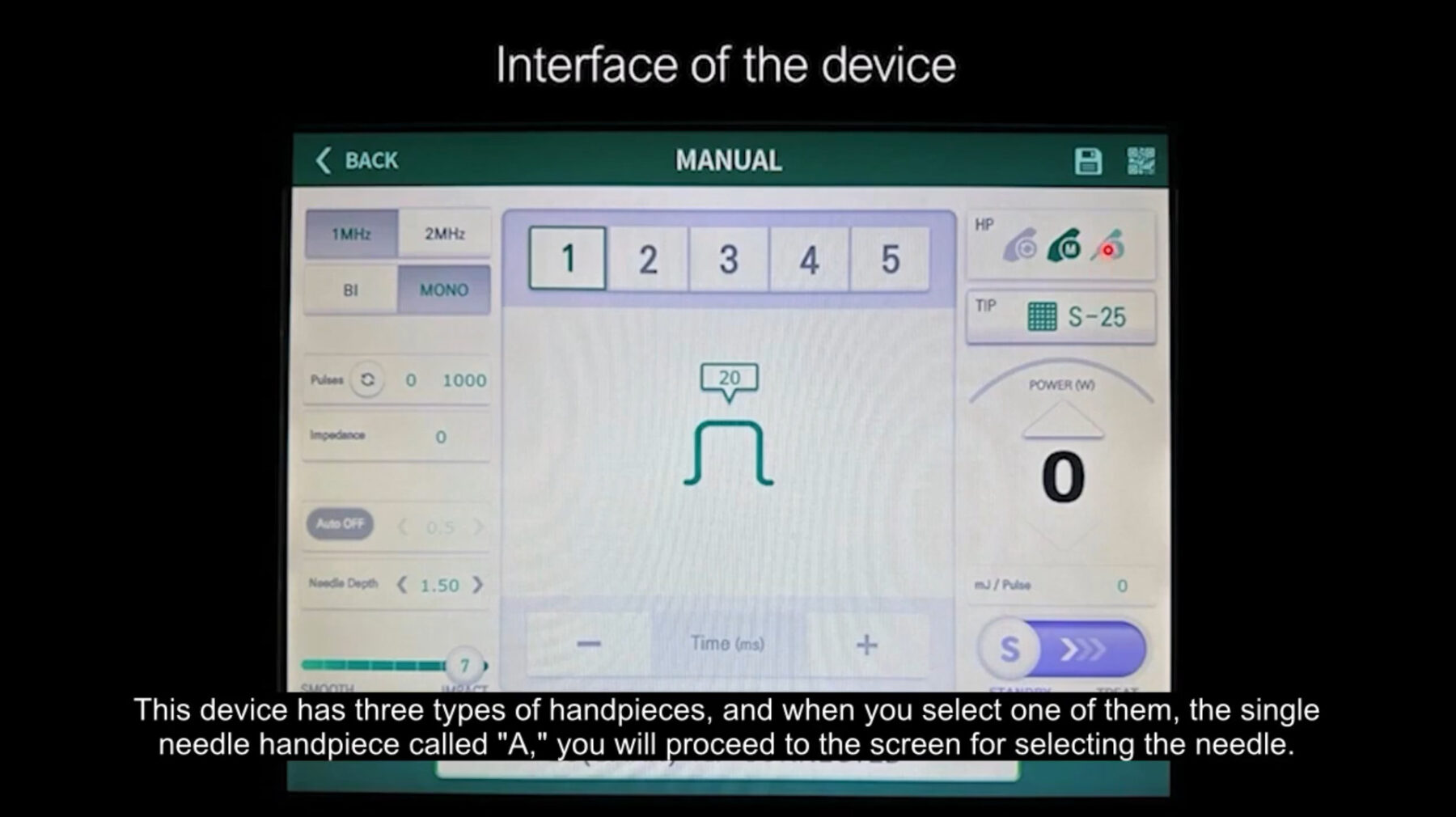
Insulated needles minimize epidermal damage while concentrating heat in the dermis.1 MHz disperses heat, while 2 MHz confines energy. Single -pulse is suitable for coagulation, while intermittent pulses (5 pulses) with “rest” intervals achieve gradual heating for remodeling. Total thermal energy is determined by “output × irradiation time.” Coagulation volume depends more on duration and depth than energy level. Therefore, after determining the goal (coagulation or remodeling), adjust settings in this order: frequency → pulse configuration → duration → depth. Keep wattage relatively constant. This technique offers high reproducibility. POTENZA’s manual mode allows switching between these settings on a single screen, facilitating easy construction of the optimal solution for each lesion.
Typical Clinical Cases and Practical Setup (21:00-)
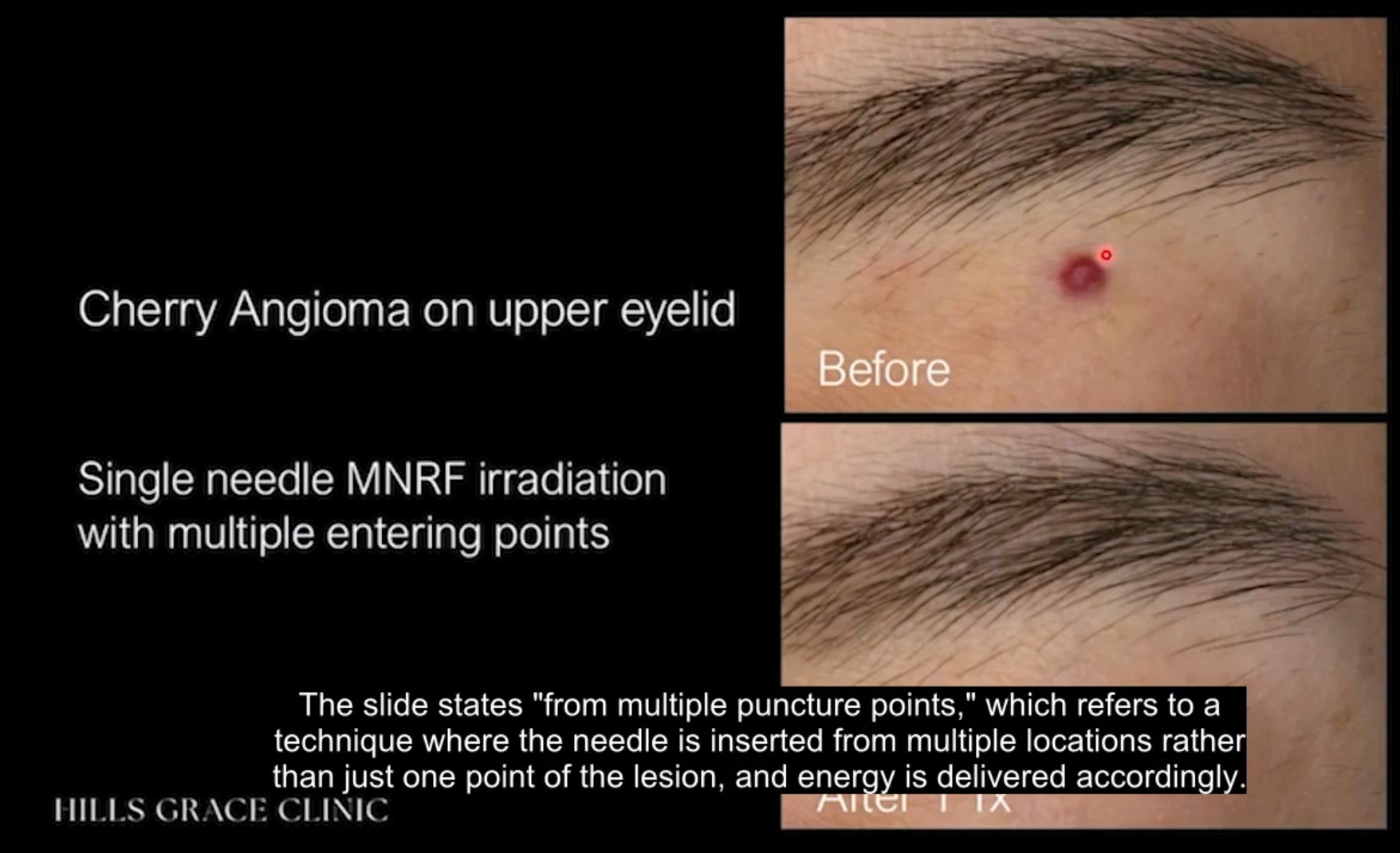
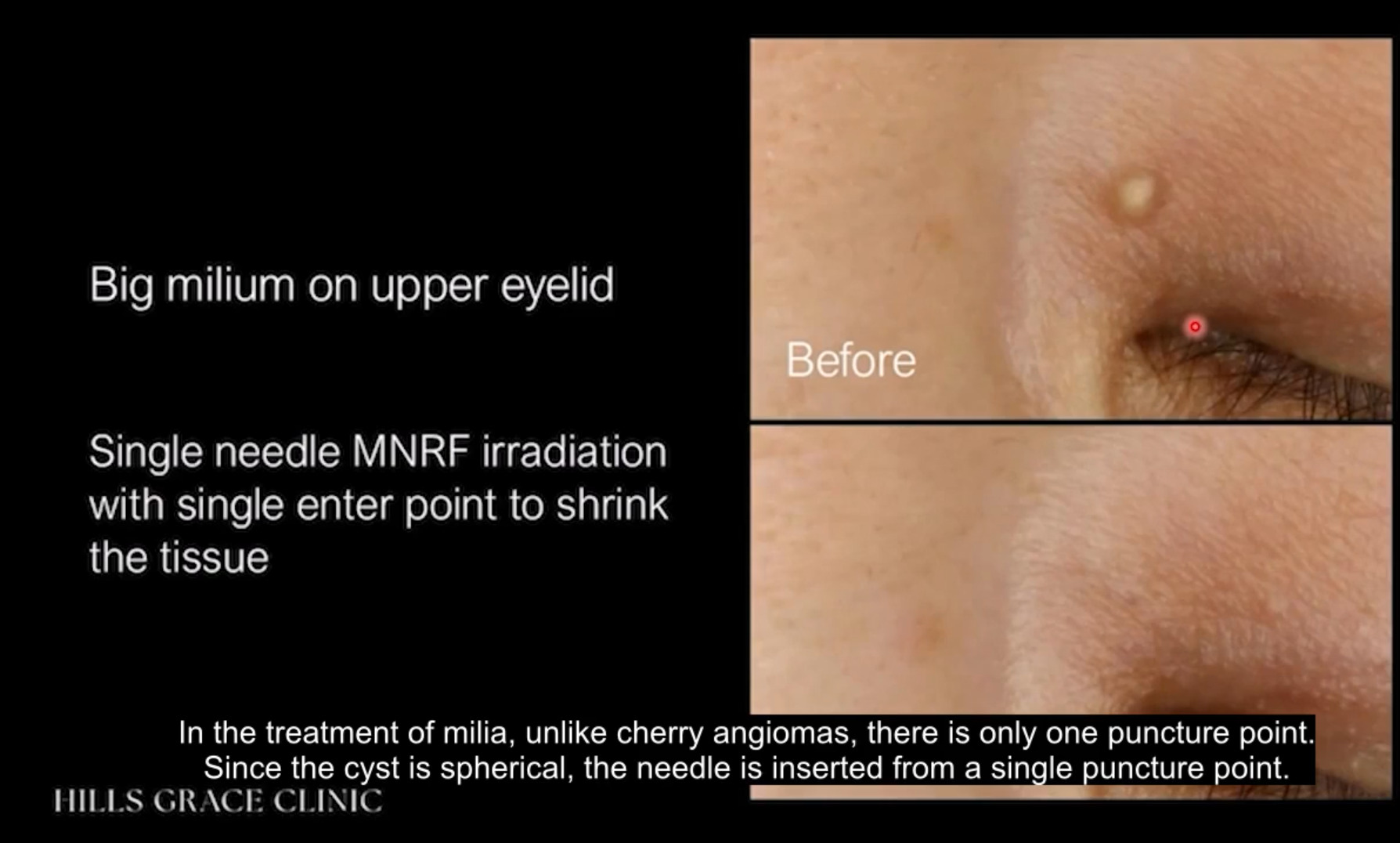
●Cherry Angioma: Use insulated needles to protect the epidermis. Irradiate with single pulses of 150–200 ms at 2 MHz. Since the lesion borders normal tissue, perform irradiation/coagulation from multiple entry points to ensure no residual lesion remains.
●Milia: After removing the contents, destroy the cyst wall to prevent recurrence. Insert the needle from a single point and ablate in a circular manner using 2 MHz + 1 pulse (100–150 milliseconds).
●Sebaceous hyperplasia: Since the contents are lipids, irradiate at 1 MHz + 1 pulse, 150–200 ms to promote heat diffusion. Confirm sebum dissolution during initial irradiation and adjust duration as needed. The sebaceous glands can be ablated by inserting the needle from a single point in a doughnut shape.
●Hypertrophic Scars: Aim for fiber remodeling, not coagulation. Maintain a gradual heating temperature around 60°C using settings like 1MHz + 5 pulses at 30ms on/10ms off. For extensive scars, increase the number of entering points to ensure uniform coverage. Repeated treatments at 8-week intervals can reduce hard, rigid areas.
Safety Margin/Endpoints and Patient Management (28:00–)
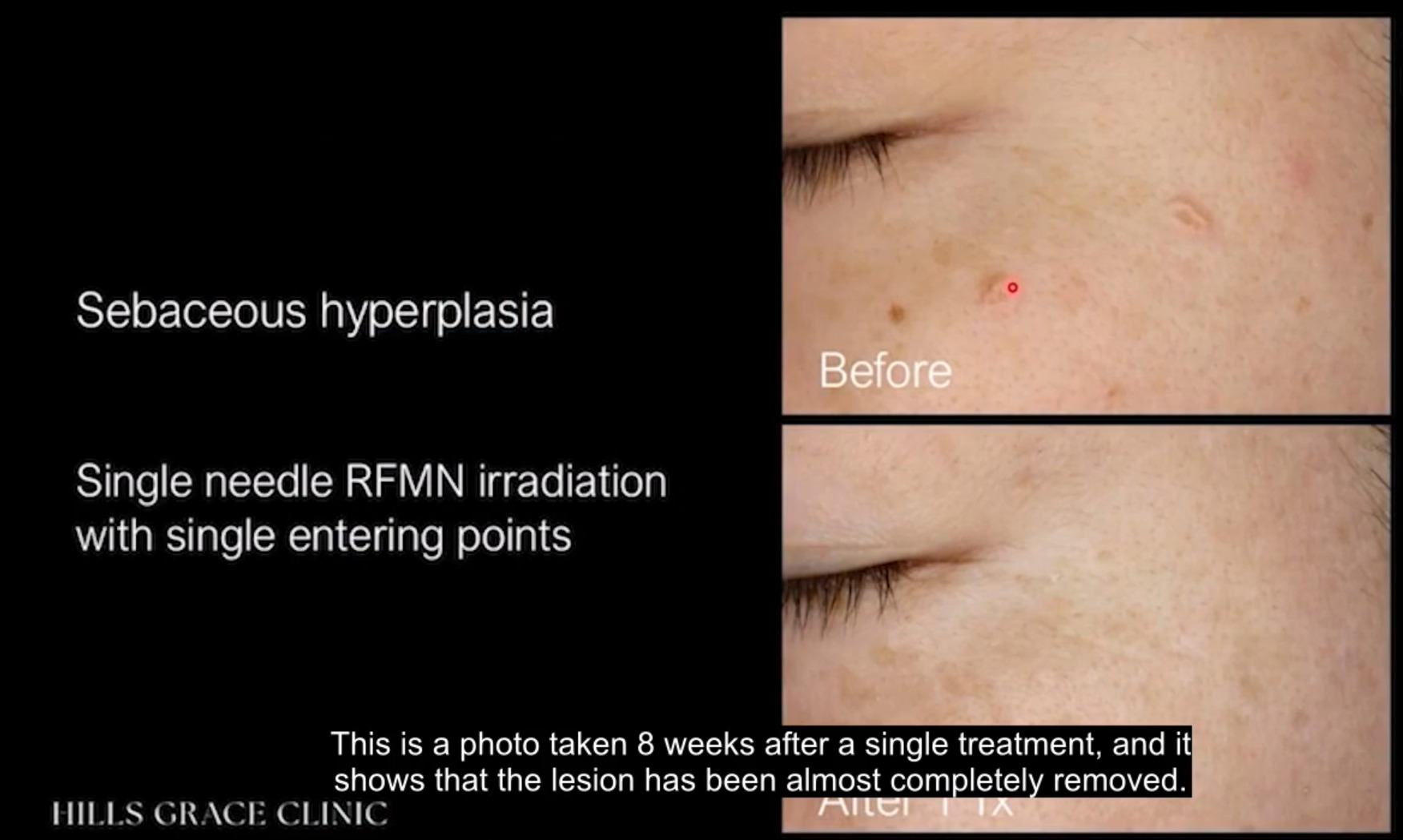
The endpoint of irradiation is localized erythema and mild edema. Carbonization indicates over irradiation. Single-needle irradiation offers high precision, but prolonged irradiation at 2 MHz for coagulation purposes increases the risk of pain; therefore, local anesthesia must be given and the needle must not be moved. Protect the epidermis and manage temperature by using insulated needles and setting appropriate depths, thereby reducing downtime. Thoroughly implement the following steps: Pathological understanding → Thermal design → Parameter setting. POTENZA enables free combination of insulation/frequency/pulse/duration/depth, achieving precise targeting from localized lesions to fibrous lesions. By clearly defining the target tissue, desired temperature profile, and target volume, practitioners can achieve highly satisfactory results with fewer treatment sessions and minimal downtime.



